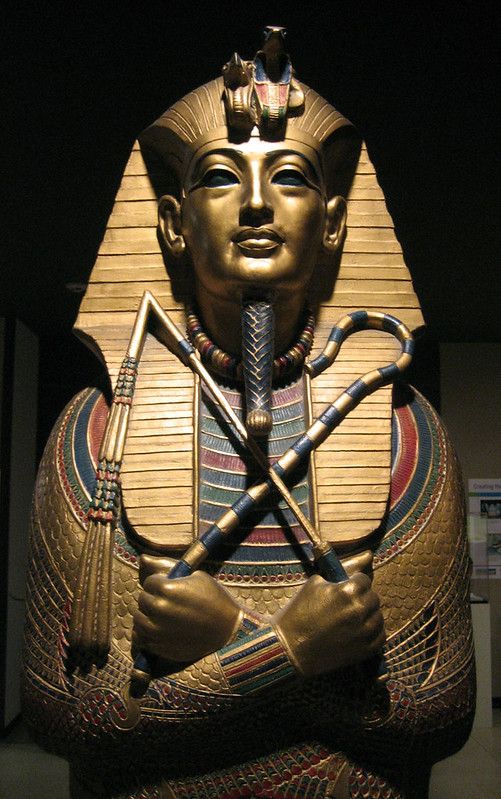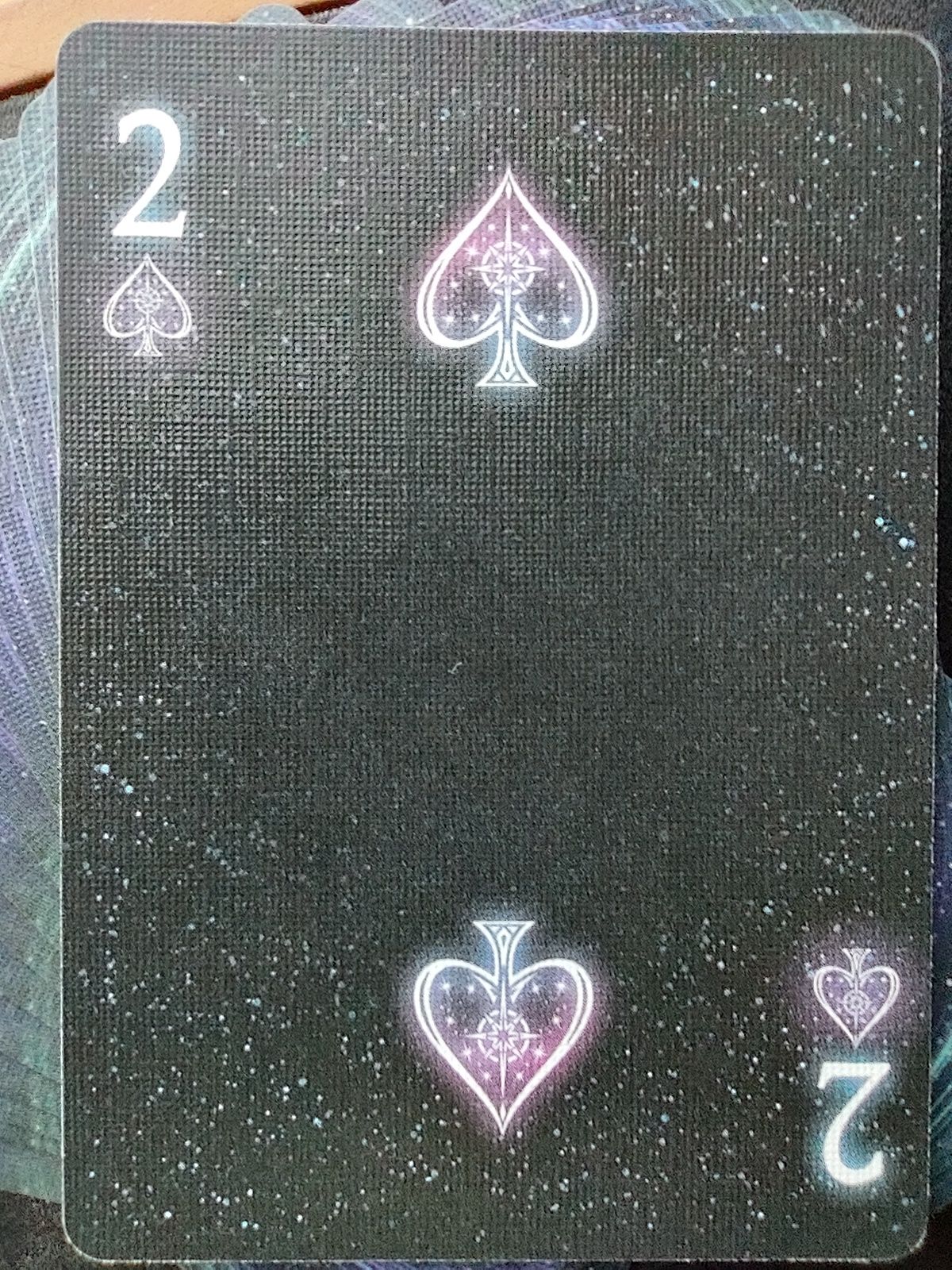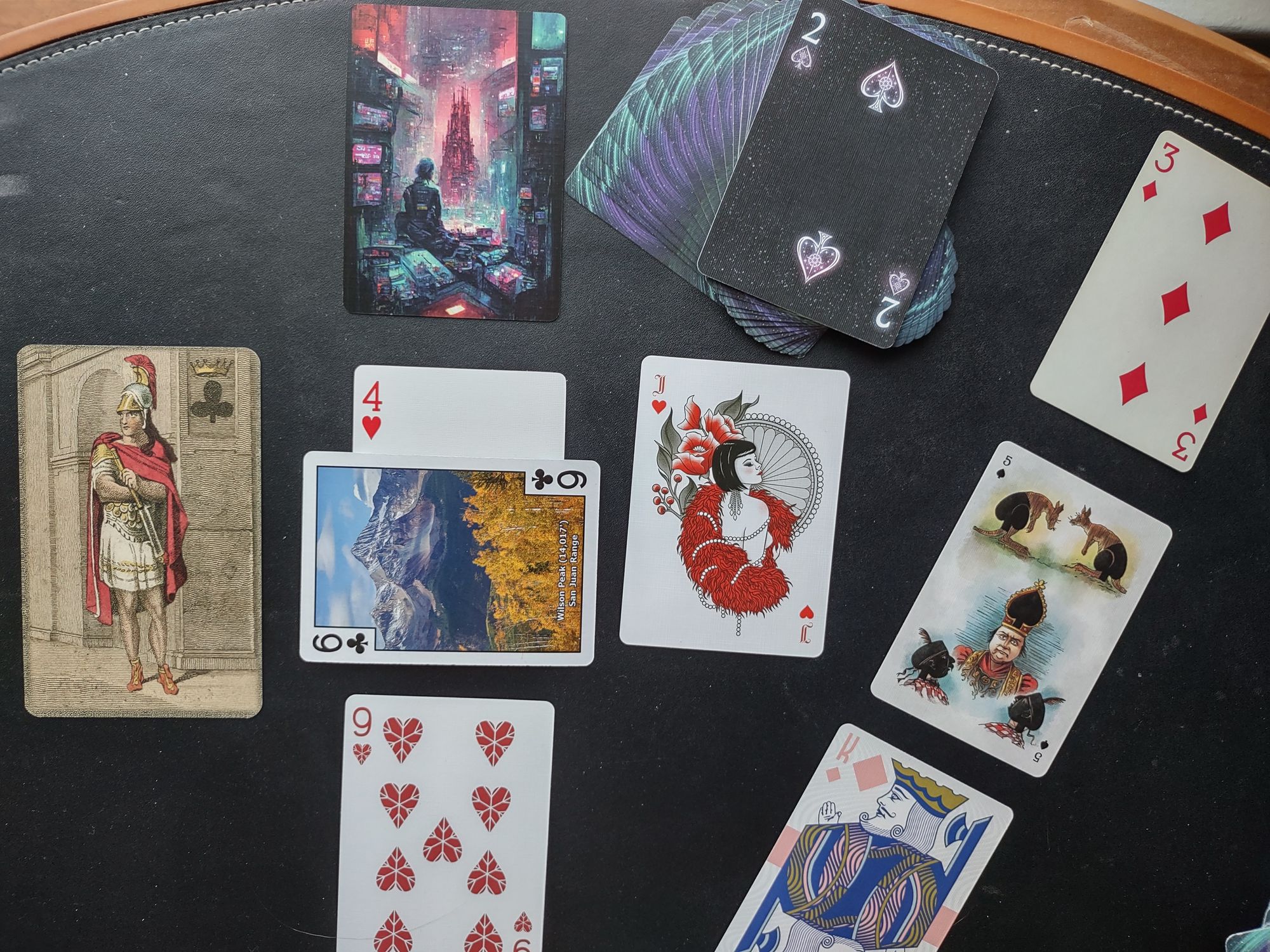X: Flail
Why are pharaohs always holding funny flails?

Good morning. Today is décadi, the 10th of Nivôse, Year CCXXXI. We celebrate le fléau, a tool for beating up wheat or people.
If you've ever seen an Ancient Egypt exhibit at a museum, you've seen a flail. Close your eyes and picture a golden sarcophagus. (It will probably be King Tut's, but that's not important right now. Also, how are you reading this with your eyes closed, cheater?) You probably pictured a face made up with heavy eyeliner. And a chin with a strange square beard-like object. And across the chest, what is that?
A shepherd's crook and a ... weird droopy thing.
Yes, that's a flail, but you're not alone in finding it weird. Despite it being part of the symbol of pharaonic power in Egypt for nearly 4,000 years, nobody can agree on exactly what it means.

The shepherd's crook is less ambiguous, generally considered to be a staff of power and leadership. The Pharaoh is the shepherd, and the Egyptians are the flock. This is not only a straightforward symbol, but one that endures to this day, largely because it was a metaphor the spread into the Arabian peninsula via the Israelite people who eventually made it a pretty central idea in a certain Bible.
But the flail is tricky. Despite being among the oldest farming implements we know of, its metaphorical meaning can go in many directions – can flail around, as it were – and appears to have shifted through the millennia of its constant use by Egyptian rulers.
The lands of Egypt were unified from two kingdoms into one about 5,500 years ago, and while the truth was probably a slow and messy unification process that was largely driven by the need to simplify and consolidate the tax code (yawn), Egyptians themselves settled on giving credit to a catfish.
King Narmer – probably also known as Pharaoh Menes, but this is not proven – was a powerful warrior who ruled both kingdoms for more than 60 years, a remarkable, Elizabethan stretch at a time when average lifespans were likely decades shorter than that. Narmer translates as "something catfish" in which "something" is angry, painful, harsh, stinging, fierce, or something else along those lines. You get the general idea what kind of catfish he was.
There is a surviving Narmer Palette – a stone with carvings on it – that dates from just after his reign or even during it, give or take a century. (Stuff this old is hard to pin down.) On it, Narmer is shown wearing a red crown on one side and a white one on the other, symbolizing his forcible unification of the Upper Nile and Lower Nile kingdoms. He moved the capital to Abydos (where he was buried and his name was carved many times) and ordered the construction of Memphis, a white-walled paradise that would eventually house the Sphinx and Pyramids. A carving in Memphis from about the same time as the Narmer Palette reads Hut-Ka-Ptah, meaning it's dedicated to Ptah, the God of craftsmen. The Greeks translated this as "Ai-Gy-Ptos" and from there, we get the name of Egypt herself, at least as she is called by her neighbors.
So Narmer was this George Washington figure for Egyptians, the founder of the first dynasty (there would be 32 dynasties before all was said and done), and he's often carved carrying around a crook. Got it. Leader dude.
But separately, a flail, which he carries while also having a bull tail and trampling his enemies. So. Warrior dude?
The only surviving flail we have is from, yep, King Tut, way later in the 18th dynasty. The boy king's golden flail was purely symbolic, and repeated in heiroglyphics from his tomb with identically decorated versions in the hands of Osiris.
If Narmer was Egypt's Washington, then Osiris was their Zeus, a mythical pharaoh who ruled in the before-before times and created agriculture itself. In his hands, the flail is clearly a symbol of his power to feed, and that's the most common interpretation of the pharaoh's flail: I can lead you (crook) because I can feed you (flail).
But the flail is three-headed, and never shown being used to thresh grain. It has beads on it, like a fly whisk or sheep whip, so some think of the crook and flail as a carrot and stick: I can lead you because you choose to follow, or because I beat you into the flock. Your call.
Beaded flails also resembles a ladanisterion, a tool for threshing the cistus shrub for labdanum, a sweet-smelling resin that's used in perfumes and incenses. Shepherds would collect it from the leg hairs of the goats and sheep that fed on the cistus and use it to oil their bodies with a more pleasant scent than the one shepherds usually attain during their work.
It would also be used as a hair oil and was believed to have aphrodisiac powers. The amount of labdanum needed for such a daily grooming would be extravagant. Here's where the theory hits the pharaohs, who are always depicted – right back to Osiris – with a straight square beard that has been meticulously groomed and resembles a goat's. It's possible the flail evokes labdanum, suggesting that the pharaoh is 1) fertile, 2) sexy, and 3) rich. These are things kings and queens the world over have sought to project, one way or another.
So is the flail a promise of food, or a threat of punishment, or just a bit of sex appeal? Why not all three? To this day, we tend to ask our leaders to keep prices low, keep enemies at bay, and keep our national image virile. If holding up a flail did that, it would probably be enough to get our vote.
Today's card: 2 of spades

Click for a recap of the story so far...
Neville is stressed about his relationships (4♥) and feeling a slow build of drama in his heart (6♣) because of a recent fight (K♣). He's bombarded with music and movies and books that are telling him to be sad (vibe), but his heart is still yearning to love (9♥). He needs to consult with a trusted authority figure (5♠) on how to get closure on that fight (K♦) before putting that love toward someone else (J♥), even though this closure could endanger his income (3♦).
Neville held a twist ending back for us. The King of clubs who was giving him such heartache wasn't just a friend or a crush, but a co-worker whom he had been dating. While they were dating, the co-worker simutaneously dumped Neville and got a promotion, leaving Neville feeling very unstable, messed up, and fearful for his job. This is a justifiable fear, as it appears he is now being ostracized by his co-workers. He could try to make this work by going to HR (the 5 of spades) and putting all this behind him, or just make the decision to move on and find another job. In either case, the outcome is going to be a lack of certainty about his income for a while, so the cards seem to suggest taking the leap. However, not all jobs are created equal, and Neville may decide he absolutely has to hold onto this one for one reason or another. In that case, it's going to be a rocky road, but the only way out is through.
What drama! We'll start a fresh reading tomorrow, and hopefully one that's a little more straightforward.




